If you’re thinking about moving to Skopje, Macedonia, or you’re just curious about what it’s like to live there, you’ve come to the right place!
In this article, we will talk about what life is like in Skopje and what you can expect if you make the move (if that’s what you’re looking to do).
We’ll cover everything from the cost of living to the climate and culture.
So whether you’re planning a permanent move to Skopje or just want to learn more about what it has to offer its residents, read our in-depth “insider’s guide to living in Skopje”!
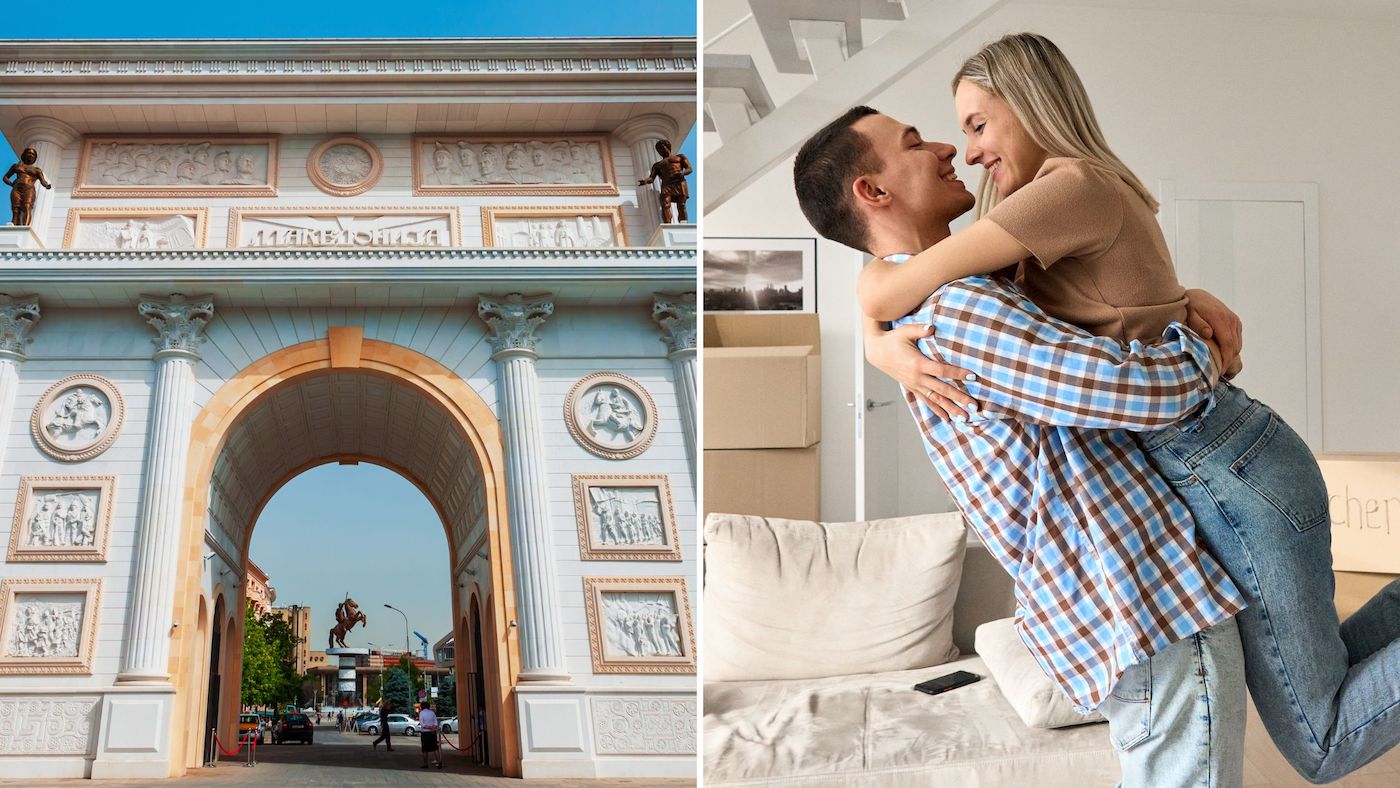
Skopje? Where’s That?
Skopje is the capital and largest city of Macedonia.
It’s located in the north-central part of the country, along the banks of the Vardar River, and has a population of around 550,000 people.
If it’s your very first time hearing about Skopje, I suggest you watch this quick video:
The Climate in Skopje

The climate in Skopje is continental, with hot summers and cold winters.
The average summer temperature is around 30-32°C (86-89°F), while the average winter temperature is between 0 and -3°C (32-37°F.)
This means that warm clothes are definitely a must during winter, and since snow and heavy rains are quite common, you should also consider investing in some rain gear and a quality pair of boots that won’t let moisture seep in.
On the other hand, spring and summer are quite pleasant, with warm days where you would only need a light jacket or a cardigan starting from May and temperatures continuing to go up all the way through August and early September before the first signs of fall start to become somewhat noticeable.
On the other hand, the humidity in Skopje varies, with summer months being relatively low compared to other seasons and winters being significantly more humid.
As per Weather Atlas, humidity is the lowest in August, with the average being around 56%, and highest in December, with the average being 85%.
The Cost of Living
The cost of living in Skopje is lower compared to most Western European cities; however, it’s still the most expensive city in Macedonia.
Rent for a one-bedroom apartment in the city center can range from $400 to $550 per month, while apartments that are slightly further from the central area can be found for as little as $300 per month.
A meal for two at a mid-range restaurant will cost you around $20, while most selections at a fast food joint (although you will not find a McDonalds in Macedonia) or one of the city’s bakeries that offer a range of pastries and breads range between $2-5.
A cup of coffee in most places in the city center will set you back $2, while the average cost of a pint in Skopje is around $3.
A grocery trip at one of the city’s cheaper supermarkets, such as KAM, Reptil, and Tinex, can cost between $20-$30 for a week’s worth of basic items like bread, milk, eggs, toiletries, and some meat while buying fresh fruits and vegetables from the Farmer’s Market offers a more organic and affordable alternative.
The prices at these markets can be as low as $1-$2 per kilogram for seasonal fruits and vegetables. However, it’s worth noting that prices can fluctuate based on the season and availability of produce.
When it comes to moving around Skopje, you can easily rely on public transport that consists of buses that operate on a fixed schedule and typically arrive every 20 minutes during peak hours and every hour during evening hours, weekends, and public holidays.
A one-way ticket on local public transport costs around $0.70, while a monthly pass is a little under $30.
On the other hand, if you prefer to take a taxi, the start tariff is usually around $1.50, with an additional $0.50 per kilometer.
On average, if you live there, you can live a decent life on $30-50 a day, which includes a decent apartment, grocery shopping, transportation, and other fun social activities.
Apartments Are Relatively Cheap to Buy
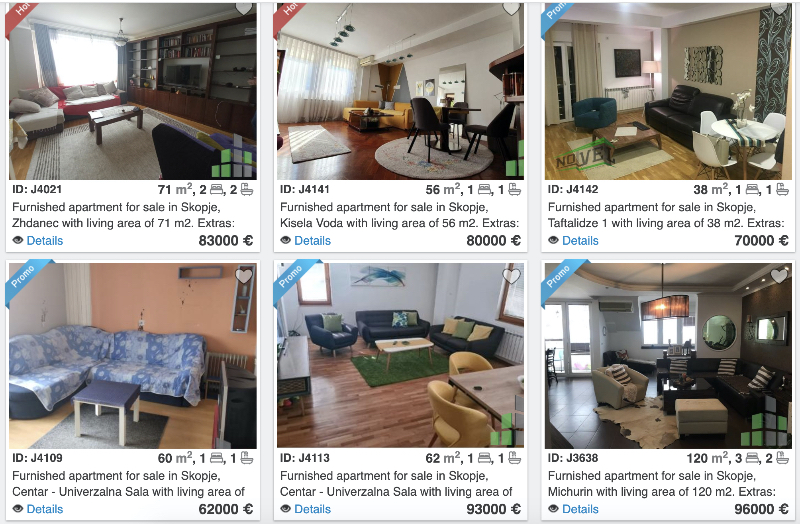
If you’re looking to buy instead of rent, you’ll be happy to know that apartments in Skopje are relatively affordable compared to most European countries.
Prices for a one-bedroom apartment in the city center start at around €100,000+.
Of course, depending on what you’re looking for and in which area, there are much higher and much lower price tags than that.
If buying an apartment in the city center is out of your budget, you can look for a cheaper alternative in the surrounding municipalities that are usually around a 10-minute drive from Macedonia Square.
Some neighborhoods like Aerodrom, Karpos, Debar Maalo, Madzir Maalo, Kisela Voda, etc., are still considered central areas due to their proximity to the city’s center, but here you can find apartments that cost considerably less than an apartment of the same size in the center would cost.
Additionally, most of these neighborhoods are quieter, boast a more family-friendly atmosphere, are well-connected with public transportation, and daily conveniences such as finding free parking near your building are much easier, which makes them a convenient choice for both locals and visitors who are considering purchasing their own place in Skopje.
On the other hand, while Skopje has many safe and welcoming neighborhoods, some areas are considered less desirable, such as Sutka, Cair, Butel, Topana, Gazi Baba, and Sever.
These neighborhoods are further from the city center, and while the prices of apartments here are definitely lower than what you would find in some more desirable areas in the city, they are generally less developed and may lack some of the amenities found in other parts of Skopje.
Additionally, these neighborhoods tend to be predominantly inhabited by locals , so you might have difficulties communicating with your neighbors if you don’t speak Macedonian.
Super Low Tax Rate
Skopje has a low tax rate, with a personal income tax rate of just 0% to 10%. This makes it an attractive place to live for those who are looking to keep more of their hard-earned money or start a business.
Setting up a business in Macedonia is an easy process, with the Central Registry of Macedonia allowing entrepreneurs to register a company online within 4 hours.
The country also provides a one-stop-shop system that makes it easier for businesses to comply with local legislation.
Furthermore, Macedonia offers competitive tax rates for businesses, so if you register your company in Skopje, the corporate tax rate is just 10%, which is one of the lowest in Europe, with only Hungary having a lower corporate tax rate of 9%.
You can read more about Macedonia’s tax code here.
Beautiful Architecture
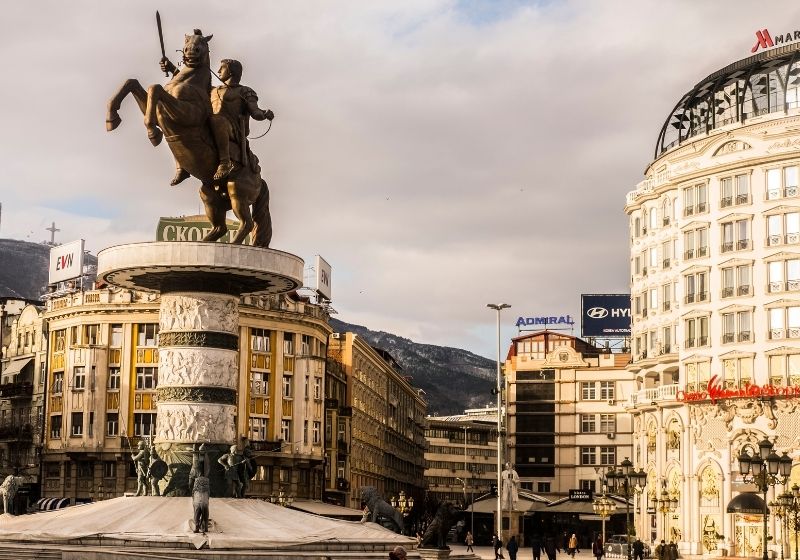
One of the things that makes Skopje such a unique city is its architecture.
The city was largely destroyed in an earthquake in 1963, so what you see today is a mix of old and new architecture.
The capital of Macedonia is home to beautiful Ottoman-style buildings, as well as Soviet-style brutalist architecture.
One of the most prominent examples of Brutalist architecture in Skopje is the Post Office building designed by Kenzo Tange, a Japanese architect, which is a concrete masterpiece that embodies the essence of communist-era architecture.
The city also boasts a number of historical architectural buildings, such as Daut Pasha Hamam and Kapan Han, which reflect the rich history and diverse culture of the region.
In the center of the city, you’ll also find the Stone Bridge, which is a historic bridge that was built in the 15th century during the rule of Sultan Mehmed II the Conqueror.
Constructed with solid stone blocks and featuring 13 arches, it spans approximately 214 meters across the Vardar River and joins Macedonia Square and the entrance to the Old Bazaar.
Over the centuries, the Stone Bridge has withstood numerous floods and earthquakes, a testament to the durability and quality of its construction.
It has also witnessed many historical events, making it not only a remarkable architectural structure but also a significant cultural and historical monument.
In recent years, a large-scale project known as “Skopje 2014” has brought about a wave of new constructions, adding a blend of classical and baroque elements to the cityscape.
This project has led to the creation of over 130 new sculptures, bridges, and buildings, and although controversial among locals due to the murky financial implications and the sudden change in the familiar architectural style loved by most locals, it’s undeniable that it has transformed the cityscape and made the city even more visually striking, especially for visitors who aren’t interested in the local politics.
Moreover, very modern and even futuristic buildings are beginning to shape Skopje’s newer neighborhoods, such as Aerodrom, which is considered the fastest-growing and most urban municipality of the country’s capital city.
Skopje Is a Great Place to Raise a Family
If you’re looking for a city to raise a family in, Skopje is a great option.
The city has a low crime rate and plenty of green spaces and parks for children to play in.
The city is also home to the Skopje Zoo, which spans over an area of about 12 hectares and is home to a wide variety of animal species from around the world, including lions, tigers, bears, monkeys, seals, and a variety of birds.
Recently renovated and a pleasant place to spend a day with friends and family, a ticket for visiting the zoo will run you around $1.50, while drinks and snacks from the kiosks inside can cost between $2-5.
Skopje also boasts a number of good schools, both public and private, including the QSI International School of Skopje, NOVA International Schools, International School Maximilian, and the American School Macedonia, which offers a full-time education from Kindergarten through Grade 12.
In conclusion, Skopje offers everything you need to have a comfortable life and raise a happy family.
And if you ever get homesick for your home country, Skopje is just a short flight away from most major European cities.
“A Melting Pot of Cultures”
When it comes to culture, Skopje is a melting pot of different influences.
The city is home to many cultural ethnicities, such as Macedonian, Albanian, Turkish, Roma, and Serbian.
As for religions in Skopje, the city is mostly Orthodox Christian, with a significant Muslim minority.
Skopje is home to over 20 churches and monasteries as well as over 20 mosques, reflecting the city’s rich cultural and religious diversity.
These structures are not just places of worship but also historical landmarks and architectural gems that tell the story of Skopje’s past.
From the ornate frescoes of the Orthodox churches to the intricate designs of the Islamic mosques, each building is a testament to the city’s multicultural heritage.
This blend of Eastern Orthodox and Islamic traditions gives Skopje its unique character, making it a fascinating destination for history buffs, architecture enthusiasts, and spiritual seekers alike.
Plenty of Restaurants to Choose From
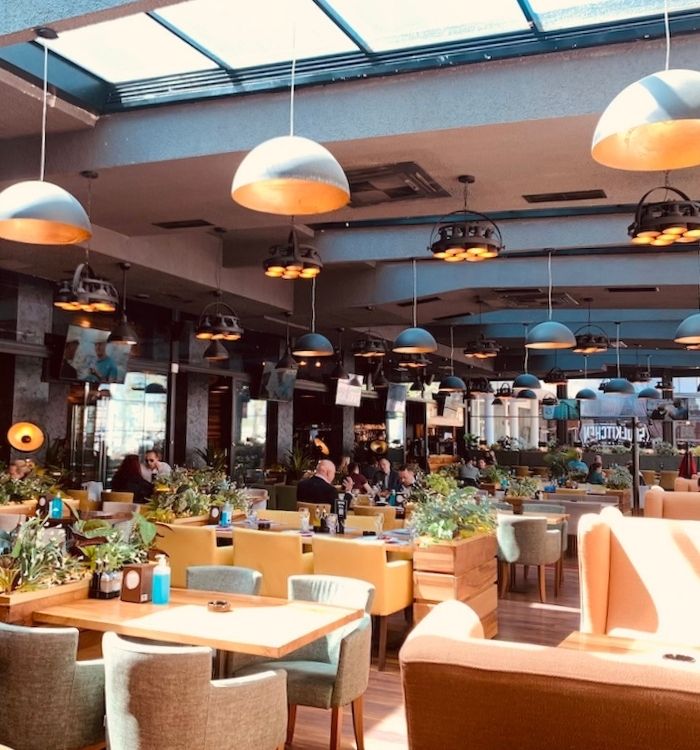
When it comes to food, Skopje has plenty of options to choose from.
The city is home to Macedonian, Albanian, Turkish, and international cuisine, with a wide variety of restaurants, cafes, and food stalls that cater to all tastes and dietary preferences.
The Macedonian cuisine is a rich blend of Mediterranean and Balkan flavors, offering hearty dishes like Tavče gravče (baked beans), Pljeskavica (Balkan burger patty), and Sarma (rolled cabbage leaves stuffed with minced meat, rice, and various herbs.)
These foods can be found in just about any traditional restaurant or a kafana that serves Macedonian food and are usually affordable and filling.
Albanian cuisine in Skopje brings its own distinct flavors with dishes like Fërgesë (a creamy dish with peppers and cottage cheese), Tavë Kosi (baked lamb with rice), and Burek (a pie filled with meat, cheese, or vegetables).
Turkish influence can be felt in Skopje’s culinary scene, with dishes like Doner kebab and Baklava (sweet pastry), which are widely available in the city’s dessert shops and restaurants.
Most Turkish and Albanian food can be found in restaurants or fast-food joints in the Old Bazaar or neighborhoods where the population is a mix of Albanian, Turkish, and Romani people, such as Čair.
Finally, for those who prefer international cuisine, there are plenty of options too.
From Italian pizzerias and pasta houses to Asian restaurants serving sushi, noodles, and stir-fries and American-style diners offering burgers and fries, the city caters to global palates.
The food scene in Skopje is a reflection of the city’s multicultural heritage, making it a gastronomic destination worth exploring.
Whether you’re a foodie seeking new culinary experiences or simply looking for a comforting meal, Skopje has a restaurant to suit your needs.
The Food is Fantastic
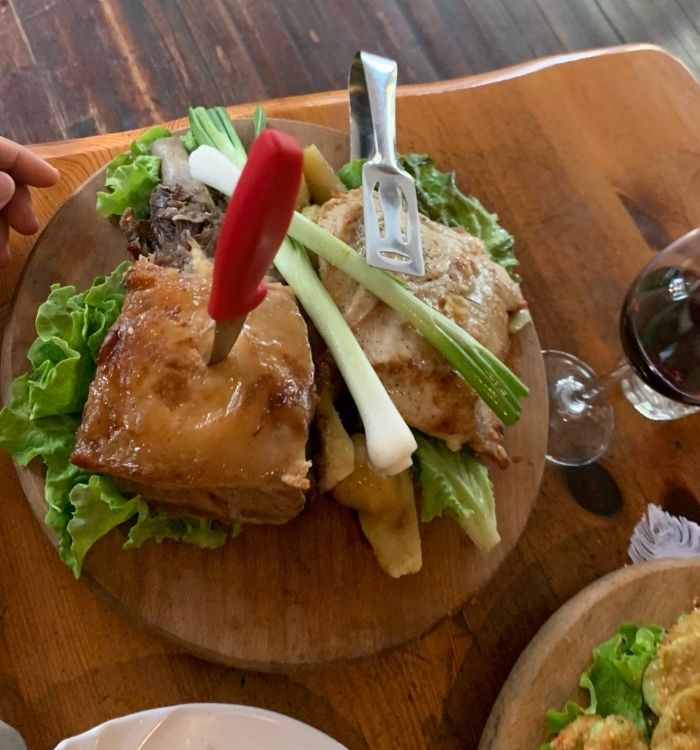
The food in Skopje is another great reason to move here.
Besides the excellent variety and many options to satiate your culinary tastes, the food in the city is known for its high quality and rich flavor.
No matter where you choose to grab your next meal from, you’re likely to be treated to fresh, locally sourced ingredients and traditional cooking methods that preserve the authenticity of the dishes.
In addition, Skopje offers a wide range of dining experiences to suit all budgets.
Whether you’re looking for an upscale restaurant for a special occasion, a cozy cafe for a casual lunch, or a street food stall for a quick snack, you’ll find it in Skopje.
Many restaurants also offer vegetarian, vegan, and gluten-free options, making it easy for everyone to enjoy the city’s culinary delights.
And, of course, don’t forget the famous Macedonian wine that accompanies these delectable dishes and is part of a winemaking history that dates back to the 13th century B.C.
The country is particularly known for its Vranec grapes, which produce robust, deeply colored red wines with a rich, full-bodied flavor.
Excellent for the colder months of the year or accompanying a heartier dish such as red meat or a rich stew.
However, as delectable as it is, be careful of overconsuming the Vranec wine during the hot summer months, as it is quite heavy and can be dehydrating.
The high alcohol content, typically around 14-15%, coupled with the robust, full-bodied nature can definitely make this wine uncomfortably potent in the heat.
On the other hand, if you are looking for something lighter, opt for Smederevka, which produces crisp, refreshing white wines known for its aromatic and balanced flavors.
These wines combine perfectly with lighter foods such as seafood and fish and are excellent for warmer weather.
Many restaurants in Skopje offer an extensive selection of local wines, providing a wonderful opportunity to explore the country’s viticultural offerings.
So, when you’re dining out in Skopje, be sure to pair your meal with a glass (or bottle) of Macedonian wine to fully immerse yourself in the local gastronomy.
In short, the food scene in Skopje is not just about eating—it’s about experiencing the city’s history, culture, and community through its food.
So, if you’re a food and wine lover considering a move, Skopje could be your next great adventure.
The Nightlife Scene is Decent
When it comes to nightlife, Skopje offers a great variety of bars, clubs, and restaurants to choose from.
For club-goers, the busiest nightclubs in Skopje are Havana Summer Club, located in the heart of City Park, and Van Gogh Bar, which can be found on a 5-minute walk from the park and are places noted for their lively crowd and party scene.
On the other hand, if you are looking for a more laid-back setting, you can visit just about any bar on the promenade or surrounding municipalities and enjoy a peaceful Friday night out with a group of friends or a date.
Speaking of which, the dating scene in Skopje is great too!
There are many singles bars and clubs, and online dating sites such as Tinder, Badoo, and International Cupid (which is perfect for foreigners looking to date locals,) are becoming increasingly popular in the country.
So whether you’re looking for love or just want to have some fun, you’ll be sure to find it in Skopje!
The City is Relatively Safe (Even For Foreigners)
Skopje is a relatively safe city, even for foreigners.
The crime rate is low, besides the occasional crimes of opportunity such as pickpocketing and car theft, and the police are typically efficient and trustworthy.
Of course, you should always take precautions by keeping personal items close, zipping your bags when outside, not flashing expensive items, and being aware of your surroundings, especially when walking in not well-lit areas, but overall, Skopje is a safe place to live in as a foreigner.
Plenty of Other Close-By Towns You Can Visit

If you’re looking for a change of pace, there are plenty of other nearby towns you can visit.
Ohrid, Bitola, and Prilep are all within a few hours’ drive of Skopje.
Each town has its own unique history and culture to explore, and you will find that most towns are significantly cheaper than Skopje (except for Ohrid, which is a major tourist destination that’s best visited out of season if your goal is to save money while visiting.)
So whether you’re looking for a day trip or a weekend getaway, you’ll be sure to find what you’re looking for close by.
Other Reasons Skopje Would Be a Great Place to Live
Taxis are cheap: A taxi ride across town will cost you around $3-$5.
The city is relatively clean: It’s not spotless, but I consider Skopje to be “a clean city” overall (even though it does get very polluted in winter, and graffiti culture is a very obvious downside.)
Public transportation works: The public transportation system in Skopje is efficient and easy to use. You can get around the city easily by bus.
There are many things to do and see: Skopje is a vibrant city with plenty of things to fill up your time. Whether you’re into nightlife or culture or just want to relax in a park, you’ll find what you’re looking for here.
The city is walkable: With its wide sidewalks, dedicated bicycle lanes, and pedestrian-friendly streets, Skopje is a great city for walking and cycling.
Reasons Skopje Would NOT Be a Great Place to Live?
The air pollution can be bad: As mentioned before, the air pollution in Skopje can be quite bad, especially in winter.
It can be difficult to find a job: Unless you have a specific skill set or speak fluent Macedonian, it can be difficult to find a job in Skopje.
The winters are cold and dark: The winters in Skopje are long and cold, with temperatures often dipping below freezing. If you don’t like the cold, you might not enjoy living here during the colder months of the year. The summers are lovely, though.
There is a lot of poverty: While the quality of life is generally high for those who have money, there is a lot of poverty and social inequality in Skopje. You will see beggars on the streets and many people struggling to make ends meet.
The traffic can get quite bad: The traffic in Skopje can be very bad, especially during rush hour. If you’re not used to it, it can be quite frustrating.
What is The Overall Quality of Life in Skopje?
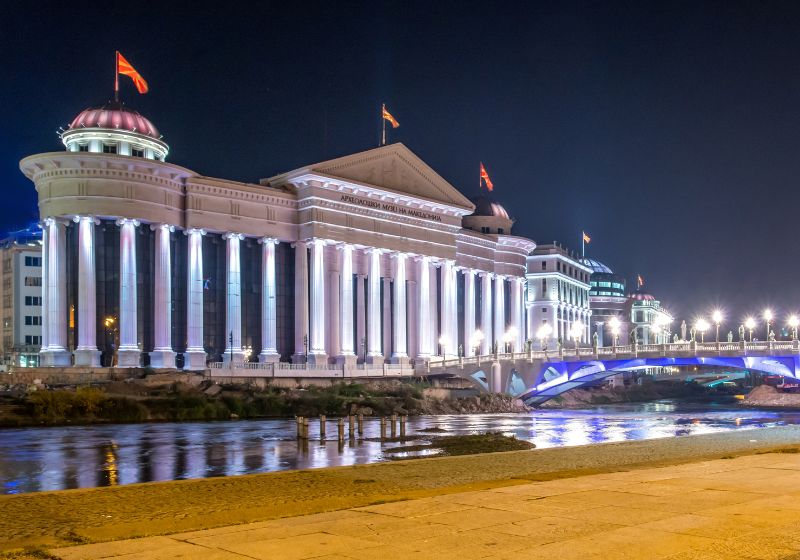
Skopje is a great place to live!
If you’re earning decent money, for example, as a digital nomad, the quality of life in Skopje is generally high for you.
The city has a lot to offer, from its rich culture to its low cost of living.
There are many things to do and see, and the people are friendly and welcoming.
If you’re looking for a great place to live, Skopje should definitely be at the top of your list.
This guide was first published on August 16, 2022 and was last updated on March 14, 2024. For more information, please contact us at contact@skopjeguide.com.
